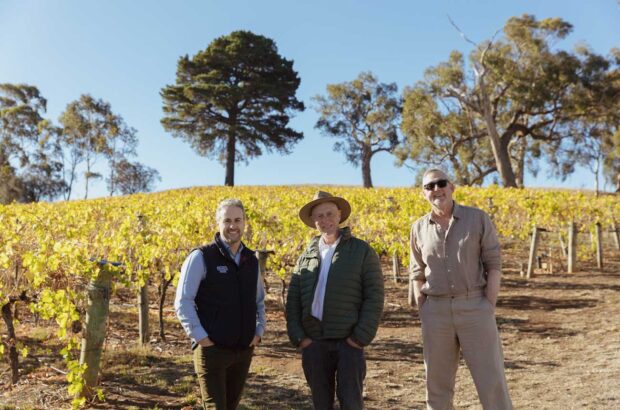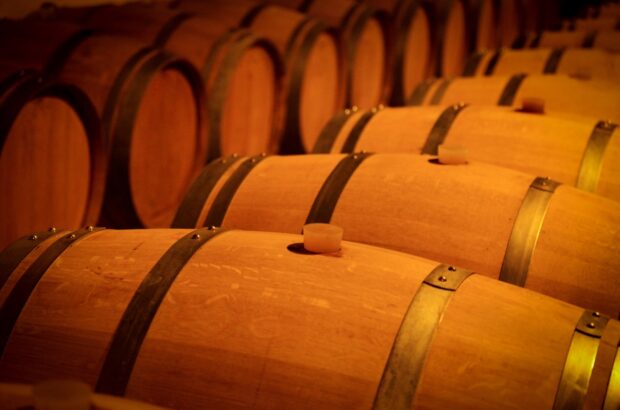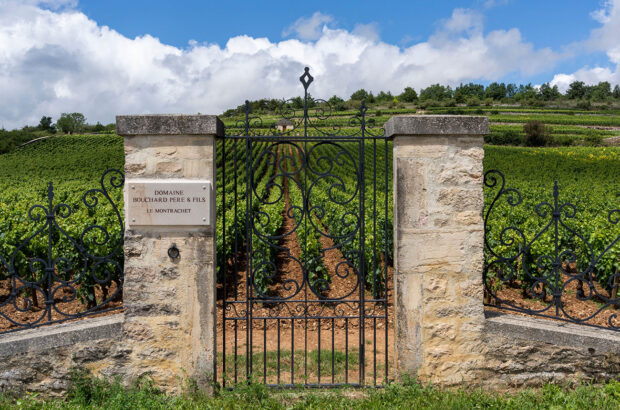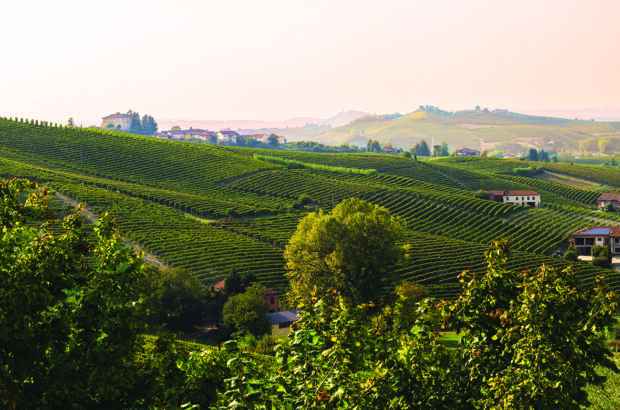Mendoza produces 75% of the Malbec we see on the shelves, but you’d be wrong to assume the wines are all much the same. To ensure you’re getting the very best that Argentina has to offer, Patricio Tapia reveals the five key sub-zones to look for on labels.
See Patricio Tapia’s 22 top Mendoza Malbecs here
Until recently, the model of Malbec offered by Argentina in general and Mendoza in particular could be summed up as friendly, juicy, ripe reds with sweet tannins and silky textures. The formula proved successful around the world, especially in the massive US market where Argentinian Malbec became the latest rage.
That said, over the past five years, Argentinian producers have turned their interest from barrels and the latest winemaking technology to the vineyard, discovering along the way that, in reality, there isn’t just one Malbec, but many, and, like every great variety in the world, it’s strongly influenced by where the grapes grow.
So what’s coming next is a whole new generation of Malbec that has moved beyond focusing on a style and has begun to base its flavours on its origins. To better understand this phenomenon, I’ve focused on Mendoza – the region that produces three-quarters of the Malbec that Argentina offers the world – and selected its most exciting subregions (here listed in geographical order from north to south). These areas represent only 10% of the total planted vineyards in Mendoza, but are delivering flavours and textures that are totally unprecedented and just waiting to be discovered.
Vistalba and Las Compuertas
 Location southwest of the city of Mendoza, in Luján de Cuyo
Location southwest of the city of Mendoza, in Luján de Cuyo
Area under vine 886 hectares
Percentage of Mendoza’s vineyards 0.6%
Vistalba and Las Compuertas are two westerly zones located in the highest part of the Luján de Cuyo appellation. Just above the northern bank of the Mendoza River, both abound with ancient Malbec vineyards, some of which are more than a century old. The two also share alluvial soils, rich in sand and stones dragged down from the Andes by the river.
In terms of altitude, Vistalba is lower, averaging about 980m above sea level, while Las Compuertas has vineyards at 1,100m – like many others in the Uco Valley. Therefore, in the warm context of Lujan’s desert climate, Vistalba and Las Compuertas are cool. Their altitude and the proximity to the mountains bathe the vineyards in cold breezes.
In terms of flavour, this Andean influence is reflected in the firm acidity of its Malbecs, although less so in its aromas. The sun does its share. ‘This zone gives plenty of colour and body with more structure than other areas,’ says Rodrigo Arizu, chief executive of Viña Alicia (pictured). ‘There are more dark red and black fruits than floral notes, and there are also spices such as black pepper, cloves and sometimes a bit of violet.’
For Hervé Birnie-Scott, estate director of Terrazas de Los Andes, the Malbecs here have good volume and are always silky. ‘In this sense, those of the Uco Valley have more structure and are tannic, with wilder aromatic notes. These are more classic.’
If you are looking for ample, expansive Malbecs, rich in ripe sweet flavours, but at the same time with solid, tense bones and sharp acidity to ensure a long time in your cellar, Las Compuertas is my favourite place in Mendoza. Gentler and lusher, examples from Vistalba could be drunk younger, as a perfect pairing for roast beef.
Agrelo
 Location south of Mendoza city in Luján de Cuyo
Location south of Mendoza city in Luján de Cuyo
Area under vine 9,000ha
Percentage of Mendoza’s vineyards 6%
Agrelo is one of Mendoza’s most traditional zones and is rich in old Malbec vineyards. It’s also the origin of some of Argentina’s most important reds and a good example of the region’s desert landscape: an enormous hillside with sandy, rocky soils that break off from the Andes Mountains and range from 780m to 1,100m above sea level. With barely 200mm of rainfall each year, its desert-like conditions are visible in the arid landscape, dominated by thorn trees as well as irrigation canals that spread swathes of green amid the sand and stones.
Malbec ripens peacefully under the Agrelo sun. ‘The Malbec from Agrelo generally has low-tomedium yields and produces grapes with intense colour and very good ripeness that are transferred to the wine, along with aromas of black fruits – especially figs – with a very subtle spice character,’ says Jorge Riccitelli, winemaker for Bodega Norton (pictured, right). He adds that Agrelo Malbecs are known for their good concentration of soft and sweet tannins.
Like many Malbec lovers, one of my first forays into this grape was thanks to Agrelo – a sunny, warm place that allows Malbec to ripen easily. The result is the most kind and gentle Malbec you can find; an excellent introduction to the grape.
Gualtallary

Location southwest of Tupungato, in the northern part of Uco Valley
Area under vine 1,900ha
Percentage of Mendoza’s vineyards 1.2%
Thanks to wines from bodegas such as Catena, Sophenia, Doña Paula and Zorzal, Gualtallary is now a hotspot of Mendoza’s wine scene. And that status is due to the excellent reds coming out of the region as well as the strong personality of its Malbec.
Gualtallary is in the highest zone of the Tupungato department (up to 1,600m, although most of the vineyards are at 1,300m), and therefore Mendoza’s coldest sector. The Andes are majestic here, with their sharply pointed peaks jutting into the horizon. The hillsides that slide down the mountains let loose their sandy, rocky, chalk-rich soils – very poor terroir in which only thorn trees and vines can survive.
This landscape and climate produce some of Mendoza’s freshest Malbecs – even when the wines push the ripeness scale (less and less common in this area) – and offer a completely different side to the variety. ‘This location gives us more austerity than exuberance,’ says Juan Pablo Michelini, winemaker at Bodega Zorzal (pictured). ‘That means aromas that are more floral, herbal and mineral than fruity, nicely textured tannins that are sharp rather than rounded, and rich natural acidity that gives us fresher and more flavourful wines.’
I’m fascinated by the landscape in Gualtallary – the Andes look and feel so dramatic up here. I’m fascinated by its wines as well, both the uncomplicated styles that deliver pure, electric red cherry juice, and the more ambitious examples that can last a decade or more in the bottle. I would urge you to try both styles.
Altamira

Location in Tunuyán, in the centre of Uco Valley
Area under vine 1,200ha
Percentage of Mendoza’s vineyards 0.8%
Of all of the Uco Valley zones, Altamira (officially known as Paraje Altamira) was one the first sub-regions to put modern Argentinian wines on our radar, and our shelves. Among those wines was Achaval-Ferrer’s Finca Altamira Malbec 1999 – a pioneer in exploiting the single-vineyard concept in Argentinian Malbec and also one of the first (perhaps the very first) of the great Uco Valley wines.
We’re in the Tunuyán department, the heart of Uco Valley, on the banks of the Tunuyán River, one of Mendoza’s most important sources of water. This river begins in the Andes and has made viticulture possible in Altamira for centuries – thanks to man-made canals. The zone’s recent fame has attracted new winemaking ventures, which means that today very old Malbec vineyards stand beside young vines. Altamira is in an alluvial cone, at altitudes of between 1,000m and 1,100m. This desert-like landscape is rich in sand and stones but also in the limestone that lends a special character to some of the wines, especially in terms of texture.
‘Altamira Malbecs are perfumed with violets and lavender and bright red fruits,’ says Santiago Achaval of Bodega Achaval-Ferrer. ‘The best wines are also very mineral, with distinct graphite notes.’ Sebastián Zuccardi of Bodegas Zuccardi also believes that the soils make Altamira Malbecs different. ‘Where the limestone soils are most evident is on the palate. The wines are not usually as fat as those from other Uco zones, but have an elegance and tension in their texture that make them very long and lingering.’
Vista Flores

Location in Tunuyán, in Uco Valley
Area under vine 2,300ha
Percentage of Mendoza’s vineyards 1.5%
Vista Flores began to be internationally known thanks to the work of consultant Michel Rolland, who convinced six other key Bordeaux figures to invest in the Uco Valley. The project, Clos de los Siete, is still one of the most ambitious ventures in the New World.
Vista Flores is a zone known for specific parcels with an excellent (though not necessarily abundant) heritage of old Malbec vines that have played a key part in great wines that, until Rolland, were simply labelled under the Mendoza appellation. Today Vista Flores is rightfully in the public eye.
The highest vineyards are in the west, reaching 1,200m in altitude. ‘The soils are of alluvial origin, predominantly sandy loam, and have a significant presence of rounded stones that are sometimes chalky,’ explains Susana Balbo, owner of Dominio del Plata, one of the many wineries that buys grapes from the zone.
Anne-Caroline Biancheri, owner of Antucura, a bodega that makes 100% Vista Flores wines, describes the character of the zone as varied, but primarily as producing Malbec of intense colour and aroma. ‘The flavours are reminiscent of plums with notes of violets and roses,’ she says.
Of all the Uco Valley areas, Vista Flores seems to offer the most lush, ripe versions of Malbec. This may be a result of the marked influence of the concentrated Rolland style of winemaking. However, refreshing new approaches practised by producers such as Dominio del Plata and Antucura prove that the character of the Malbecs of Vista Flores remains to be defined.












